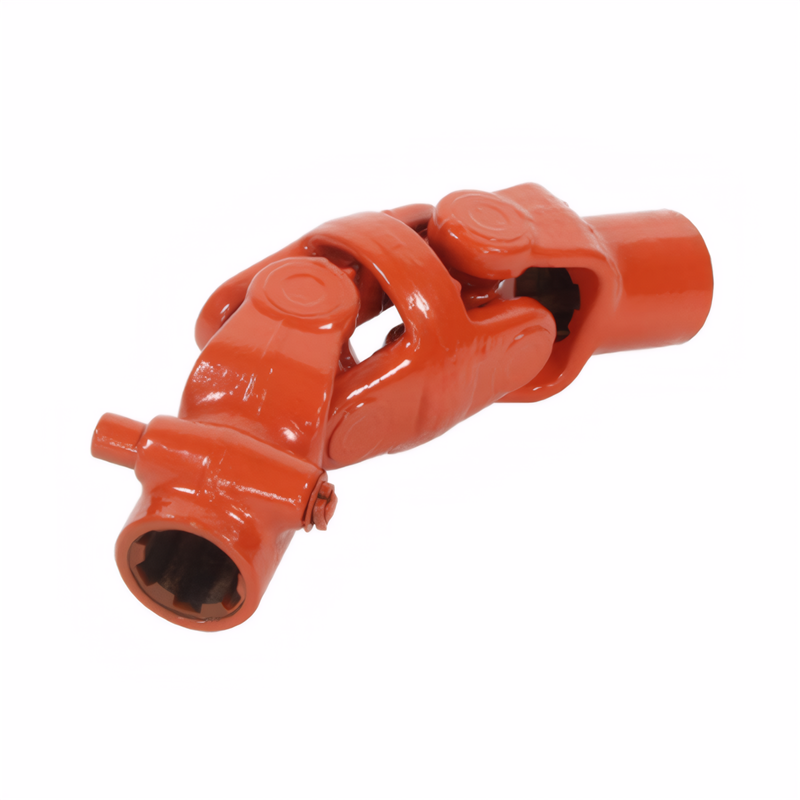The design of the drive shaft to reduce vibration
Design Strategies to Minimize Vibration in Drive Shafts
Drive shafts are critical for transmitting rotational power efficiently, but excessive vibration can undermine performance, safety, and component lifespan. Designing drive shafts to reduce vibration requires a holistic approach that addresses material selection, structural geometry, and dynamic balancing. Below, we explore key strategies engineers employ to achieve smoother operation.
Optimizing Material Selection and Damping Properties
The choice of material significantly influences a drive shaft’s ability to absorb and dissipate vibrational energy.
- High-Strength Composites: Advanced composites, such as carbon fiber-reinforced polymers, offer superior stiffness-to-weight ratios compared to traditional steel. This reduces inertial forces that contribute to vibration while maintaining structural integrity.
- Viscoelastic Coatings: Applying damping coatings to the shaft’s surface can absorb high-frequency vibrations. These materials convert mechanical energy into heat, mitigating resonance effects that amplify oscillations.
- Internal Damping Mechanisms: Some designs incorporate viscous dampers or tuned mass dampers within the shaft assembly. These systems counteract specific vibrational frequencies, stabilizing the shaft during operation.
By prioritizing materials with inherent damping capabilities, engineers create drive shafts that inherently resist vibration generation and propagation.
Precision Engineering of Geometric Features
The physical shape and alignment of a drive shaft play a pivotal role in minimizing vibrations.
- Symmetrical Mass Distribution: Ensuring uniform mass distribution along the shaft’s length prevents imbalances that cause wobbling. This involves machining components to tight tolerances and using computer-aided design (CAD) tools to simulate dynamic behavior.
- Tapered or Hollow Designs: Hollow shafts reduce weight while maintaining strength, lowering rotational inertia. Tapered sections can further optimize stiffness gradients, reducing flex-induced vibrations under varying loads.
- Flexible Couplings: Integrating flexible couplings at connection points allows for slight misalignments without transmitting stress to the shaft. These couplings absorb angular and axial displacements, preventing vibration from cascading through the system.
Geometric precision ensures that the shaft operates as intended, even under fluctuating torque or speed conditions.
Dynamic Balancing and Computational Analysis
Achieving true balance requires advanced techniques to identify and correct imbalances before assembly.
- Multi-Plane Balancing: Unlike single-plane balancing, which addresses only radial imbalances, multi-plane balancing corrects both radial and axial forces. This is critical for long drive shafts used in vehicles or industrial equipment, where axial vibrations can cause severe instability.
- Finite Element Analysis (FEA): FEA simulations model stress, strain, and vibrational modes across the shaft’s operating range. Engineers use this data to refine designs, identifying weak points or resonance frequencies that could lead to vibration issues.
- Real-Time Monitoring Systems: Some modern drive shafts incorporate sensors to detect vibrations during operation. These systems provide feedback for adaptive balancing or predictive maintenance, preventing failures before they occur.
Dynamic balancing and computational tools ensure that the shaft remains stable across all operational scenarios, from low-speed idling to high-torque acceleration.
Reducing Misalignment and Installation Errors
Even a perfectly designed drive shaft can vibrate if installed incorrectly or misaligned with connected components.
- Alignment Tolerances: Strict adherence to alignment specifications during installation minimizes angular and parallel misalignments. Laser alignment tools help achieve sub-millimeter precision, reducing stress on bearings and joints.
- Universal Joint Design: Universal joints (U-joints) must operate within specified angle limits to avoid introducing vibrations. Double-cardan joints or constant-velocity joints offer smoother power transmission at extreme angles, reducing the risk of imbalance.
- Proper Mounting Techniques: Secure mounting brackets and vibration isolators prevent the shaft from transmitting vibrations to the chassis or frame. Rubber mounts or hydraulic dampers can further decouple the shaft from external vibrations.
By addressing installation-related factors, engineers ensure that the drive shaft’s design performance translates to real-world reliability.
Conclusion
Minimizing vibration in drive shafts demands a combination of material science, geometric precision, and advanced balancing techniques. From selecting damping materials to employing real-time monitoring, each strategy contributes to a smoother, safer, and more efficient power transmission system. As applications demand higher performance and durability, these design principles become increasingly essential for maintaining operational integrity.
 The design of the drive shaft
The design of the drive shaft
 The importance of balanced ope
The importance of balanced ope
 The manifestations of spline w
The manifestations of spline w
 The correct installation seque
The correct installation seque
 简体中文
简体中文 English
English
